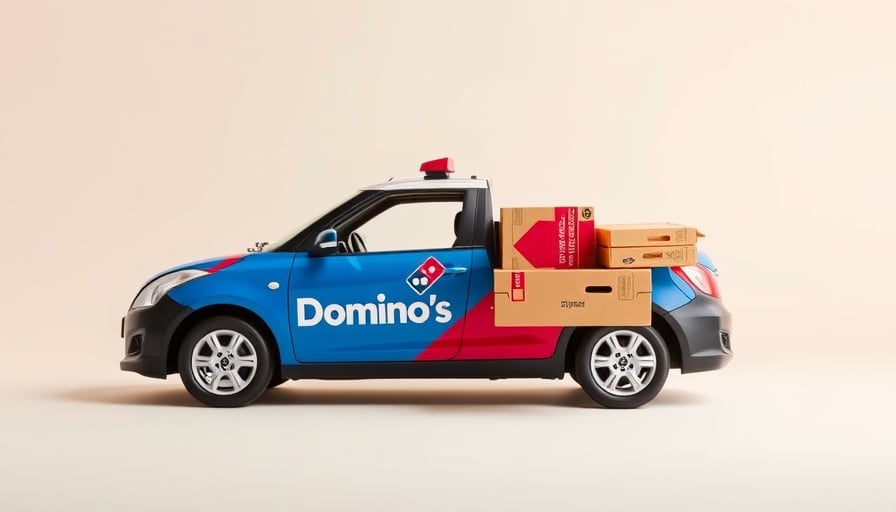Corporate News: Consumer Trends and the Future of the Food‑Service Landscape
Domino’s Pizza Inc. reported a buoyant quarterly performance that underscores the growing importance of value‑pricing strategies in an era of rising consumer price sensitivity. In contrast, Chipotle Mexican Grill has experienced a decline in share value, reflecting broader shifts in spending habits and the impact of macro‑economic pressures such as tariffs and inflation. By examining these corporate outcomes through the lenses of lifestyle evolution, demographic change, and cultural momentum, we can identify emerging market opportunities and the strategic adaptations required to capitalize on them.
1. The Value‑Driven Consumer: A Cultural Shift
Recent data indicate that a sizeable portion of the U.S. population is gravitating toward cheaper meal options. This trend is not merely a short‑term response to temporary price spikes; it reflects a deeper, long‑term recalibration of consumer priorities.
- Economic Recalibration – Rising energy costs, supply‑chain bottlenecks, and tariff‑related price increases have stretched household budgets. Consequently, the average consumer is prioritizing affordability without sacrificing convenience.
- Lifestyle Reorientation – The acceleration of remote work and the rise of the “flex‑work” generation have compressed discretionary time, driving a preference for ready‑to‑eat or quickly assembled meals that do not require extensive preparation.
- Cultural Narrative – The narrative of “smart consumption”—balancing quality, health, and cost—has become a defining cultural motif. Consumers are seeking brands that can deliver on these three pillars simultaneously.
Domino’s leverages this cultural narrative by maintaining a robust digital ordering platform, offering frequent promotions, and providing a wide variety of menu options that cater to budget‑conscious diners. The company’s performance aligns with the broader trend of consumers rethinking everyday purchases in response to inflationary pressures.
2. Demographic Shifts: Generational Spending Patterns
The composition of the U.S. consumer base is shifting. Millennials and Gen Z now outnumber Baby Boomers in the workforce and the middle‑class consumer segment, while the latter group continues to hold significant purchasing power.
- Millennial & Gen Z Preferences – These cohorts favor experiential dining, sustainability, and tech‑enabled services. They are comfortable with subscription models, app‑based ordering, and real‑time delivery tracking.
- Gen X & Boomers – Although still significant spenders, these groups are increasingly drawn to value and convenience, especially in the context of family meals.
Chipotle’s recent revenue forecast cuts stem, in part, from a pullback in spending from low‑to‑middle‑income households, a demographic that has traditionally been a core driver of the company’s growth. Meanwhile, Domino’s has seen its market capitalization swell to over $13.9 billion, suggesting that its broader demographic appeal is resonating across income brackets.
3. The Digital‑Physical Retail Nexus
The convergence of digital platforms and physical storefronts has become a decisive factor in consumer choice.
- Omnichannel Experience – Domino’s has invested heavily in a seamless order‑through‑app experience that integrates with its physical kitchens, ensuring a consistent and efficient delivery model.
- Data‑Driven Personalization – By leveraging customer data, Domino’s can tailor promotions to specific segments, thereby boosting conversion rates and customer lifetime value.
- Physical Storefronts as Experience Hubs – In the near‑term, physical locations are increasingly being repurposed as “experience centers” where customers can enjoy in‑store pickup, brand activations, and community engagement, thereby reinforcing loyalty.
Chipotle, however, has struggled to fully capitalize on this nexus. Its focus on a premium, health‑centric brand image has limited its ability to scale discount promotions that resonate with value‑sensitive consumers.
4. Forward‑Looking Market Opportunities
- Hybrid Menu Structures – Brands that can quickly pivot between premium and value offerings—e.g., a “budget” line within an existing menu—are likely to capture the widest audience.
- Subscription and Loyalty Models – Tiered loyalty programs that reward repeat orders can offset the erosion of single‑purchase margins in a highly competitive environment.
- Localized Digital Campaigns – Targeted promotions that reflect regional price sensitivities or cultural preferences can improve engagement.
- Sustainable Supply Chains – Demonstrating a commitment to sustainability not only meets consumer expectations but also offers a defensible competitive advantage, especially as regulations tighten.
5. Conclusion
The contrasting fortunes of Domino’s and Chipotle illustrate the critical importance of aligning corporate strategy with evolving consumer lifestyles, generational spending patterns, and the digital‑physical retail landscape. Brands that embed value, convenience, and digital sophistication into their core operations will be well positioned to navigate the current inflationary climate and to thrive as consumer preferences continue to shift toward smarter, more flexible dining experiences.
